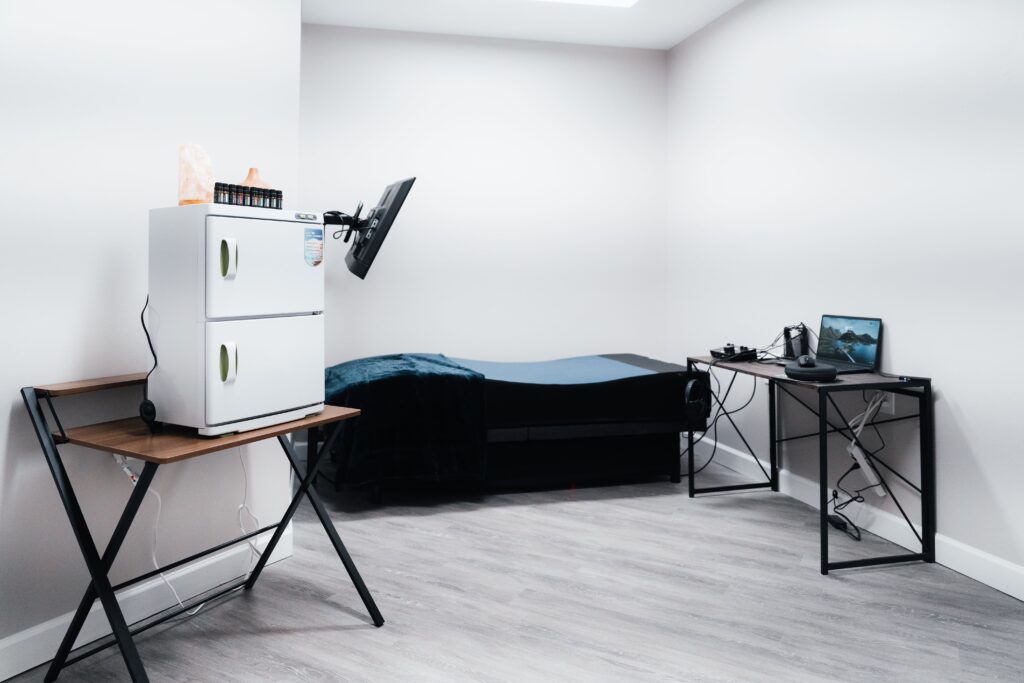Premenstrual Dysphoric Disorder Treatment (PMDD)

Dr. Thompson
Medically Reviewed by Dr. Thompson
Last Updated on:
October 14, 2024
Speak To A Mental Health Expert
Premenstrual Dysphoric Disorder (PMDD) is a severe form of premenstrual syndrome (PMS) that affects women during the luteal phase of their menstrual cycle.
Unlike PMS, which may cause mild discomfort, PMDD is considered a depressive disorder and can cause debilitating emotional and physical symptoms that significantly disrupt daily life.
PMDD is often misunderstood by many. However, effective treatment is available to help women manage their symptoms and regain control of their lives.
If you or a loved one may be struggling with PMDD, Arbor Wellness can help.
Call us now at 629-217-2658 or verify your insurance.
What is Premenstrual Dysphoric Disorder? (PMDD)
PMDD is a chronic medical condition that causes severe mood swings, irritability, depression, anxiety, and physical discomfort in the days or weeks leading up to a woman’s period. Some people with PMDD can become suicidal.
PMDD is believed to be linked to hormonal changes that occur during the menstrual cycle and how these changes interact with brain chemistry. PMDD is more intense than PMS and can have a significant impact on mental health and overall well-being.
PMDD can improve within a few days and affects nearly 10% of women or people assigned female at birth of reproductive age.
You are not alone. You deserve to get help.
Arbor Wellness is an industry leader in mental health treatment. Our team of top medical experts specialize in dual diagnosis treatment and are committed to ensuring that each patient is treated as an individual. Call us today, we’re available 24/7.
Signs and Symptoms of PMDD
The symptoms of PMDD can very from person to person and typically appear one to two weeks before menstruation. Symptoms resolve a few days after the period begins, however this condition can severely affect someone’s daily life.
Common signs and symptoms include:
- Severe mood swings
- Depression or feelings of hopelessness
- Intense irritability or anger
- Anxiety or tension
- Decreased interest in daily activities
- Difficulty concentrating
- Fatigue or low energy
- Insomnia or trouble sleeping
- Changes in appetite or sleeping patterns
- Physical symptoms such as bloating, breast tenderness, headaches, or joint pain
If You are in need of immediate assistance...
Don’t hesitate to contact us immediately. In the case of a medical emergency please contact 911 or visit your local emergency department.
Who Is At Risk Of Developing PMDD?
The exact cause of PMDD is unknown. However, decreased levels of estrogen and progresterone hormones after ovulation can potentially trigger symptoms.
Certain factors may increase the risk of developing the condition, including:
- A personal or family history of depression or mood disorders
- Sensitivity to hormonal changes during the menstrual cycle
- A history of PMS
- Stressful life events or trauma
How is PMDD Diagnosed?
Diagnosis of PMDD is based on a thorough evaluation of a woman’s medical history and symptoms.
A mental health professional may ask you to track your symptoms for at least two menstrual cycles to identify patterns and report back.
The symptoms of PMDD must be attributed to five or more symptoms, severe enough to interfere with daily life and cannot be solely attributed to other mental health conditions like depression, anxiety, or reproductive disorders.
More: Is PMDD A Disability?
Complications of PMDD
PMDD is a serious mental health condition.
Untreated PMDD can lead to serious complications, including:
- Strained relationships due to mood swings and irritability
- Difficulty maintaining a stable work or home life
- Increased risk of developing depression or anxiety
- Potential harm to self-esteem and overall quality of life
Treatment options for PMDD
Several treatment options are available to help manage the symptoms of PMDD. These include:
- Antidepressants: Mental health medications such as Selective serotonin reuptake inhibitors (SSRIs) are often the first line of treatment for PMDD and have been shown to relieve emotional symptoms.
- Mental Health Residential Treatment: Residential mental health treatment involves a 30+ day stay at an inpatient treatment facility where clients are assessed and stabilized. During this period clients take part in different types of therapy and are monitored 24/7.
- Hormonal treatments: Birth control pills or hormone therapies that stabilize hormone levels may reduce PMDD symptoms.
- Lifestyle changes: Regular exercise, a balanced diet, and stress management techniques can help alleviate symptoms.
- Cognitive-behavioral therapy (CBT): CBT Therapy can help manage the emotional symptoms of PMDD.
- Nutritional supplements: Calcium, magnesium, and vitamin B6 are sometimes recommended to improve symptoms.
What To Expect If I Have PMDD?
Living with PMDD can be challenging, but with the right treatment plan, many women find significant relief. By working closely with your healthcare provider or mental health treatment center, you can develop a strategy that addresses your specific symptoms, whether through medication, lifestyle changes, or therapy.
It may take time to find the best approach, but with persistence and support, you can improve your quality of life and manage PMDD more effectively.
What's The Difference Between PMS and PMDD?
The primary difference between PMS (premenstrual syndrome) and PMDD lies in the severity of symptoms and the impact on daily life. While both conditions occur in the luteal phase of the menstrual cycle (the week or two before menstruation), PMDD is a more severe form of PMS, with pronounced emotional and physical symptoms that can be debilitating.
Begin Premenstrual dysphoric disorder treatment today
If you are experiencing symptoms of PMDD, don’t wait to seek help. Effective treatment can restore balance to your life and help you manage both the physical and emotional symptoms of the disorder.
Call Arbor Wellness now at 629-217-2658 to learn more about our mental health treatment options in Nashville and take the first step toward relief.
We Work With Most Major Insurance
Did you know most major health insurance plans with out-of-network benefits can help cover most of the costs associated with our program? Click below to find out your coverage and treatment options right now.






























